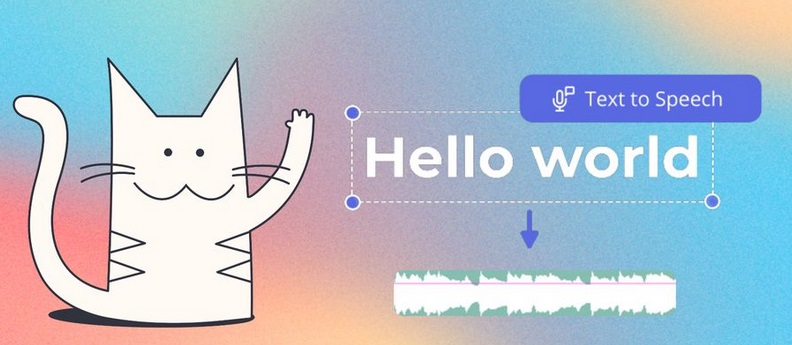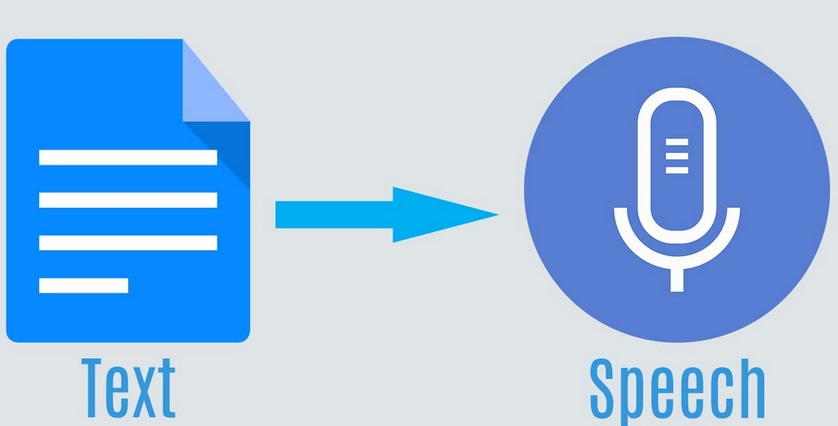Hey there! Today, I’ll cover text-to-speech technology. This powerful tool, which falls under the umbrella of Artificial Intelligence, lets us transform text into lifelike speech. In this tutorial, I’ll walk you through the ins and outs of text-to-speech and how it’s reshaping industries.
## Understanding Text-to-Speech
Text-to-speech is a cornerstone of Artificial Intelligence that harnesses the magic of speech synthesis to convert written words into spoken language. Think back to the excitement stirred up by Siri’s debut in October 2011 – that was just the beginning. Fast forward to today, and AI voice generators are poised to revolutionize the voiceover landscape.
Why does this matter? Well, whether you’re crafting content, enhancing user experiences, or providing customer support, an AI voice generator is a game-changer. It offers an efficient and cost-effective way to engage diverse audiences, including those with disabilities. Text-to-speech technology, also known as read-aloud technology, analyzes input text and generates accurate speech using speech synthesis techniques.
## Unveiling the Text-to-Speech Magic
So, what exactly is text-to-speech? Allow me to break it down for you. Text-to-speech is an assistive technology driven by AI. With the help of speech synthesis, deep learning, and smart algorithms, we can now create human-like voices that even mimic accents and dialects. The secret ingredient? A method called speech synthesis, which stitches together pre-recorded speech segments to craft a voice that mirrors the input text.
Here’s the exciting part – tools like Murf.ai make harnessing AI-generated voices a breeze. Curious about how it works? Let’s dive in:
1. **Input Text:** Start by typing the text you want to convert into speech.
2. **Voice Selection:** Choose from a variety of voices and languages available within Amazon Polly.
3. **Customization:** Tweak your voiceover by adjusting pauses, pitch, and more.
4. **Preview & Download:** Give it a listen, make any final adjustments, and then download your AI-generated voiceover.
## Applications and Versatility
 Text-to-speech isn’t just for the tech-savvy. Businesses, freelancers, adults, and even kids can benefit from its capabilities. Its compatibility with devices like computers, tablets, and smartphones via apps and websites makes it incredibly accessible. Beyond voiceovers, text-to-speech is a versatile tool for creating audio articles, podcasts, and more.
Text-to-speech isn’t just for the tech-savvy. Businesses, freelancers, adults, and even kids can benefit from its capabilities. Its compatibility with devices like computers, tablets, and smartphones via apps and websites makes it incredibly accessible. Beyond voiceovers, text-to-speech is a versatile tool for creating audio articles, podcasts, and more.
## Journey Through Text-to-Speech History
Let’s take a quick trip back in time. The roots of text-to-speech date to 1968, when Norika Umeda invented English text-to-speech at a Japanese laboratory. Before that, in the 1950s, the first speech synthesis system emerged – a machine that turned written words into spoken language. By the 1980s, speech synthesis found its way into video games, marking a pivotal moment in the technology’s journey.
Fast forward to the 1990s, and we saw advancements in human-like voices. Researchers like Ann Syrdal brought us female speech synthesizer voices that sounded remarkably natural. By the end of the decade, Microsoft’s Narrator, a screen reader, was changing the game for Windows users everywhere.
The 2010s witnessed even greater strides. Extensive research and technological innovations resulted in AI voices that mimicked accents and nuances. Siri and Alexa became household names, showcasing the transformation from robotic to interactive AI voices.
## Demystifying Text-To-Speech Mechanics
Now that you have a grasp of text-to-speech, let’s demystify how it works under the hood.
**The Front End:** Generating audio is as simple as feeding your text into the text-to-speech converter and selecting a language. APIs and plugins can automate audio generation for websites and podcasts.
**The Back End:** This is where the magic happens. Artificial intelligence takes the reins. Here’s a simplified breakdown:
1. **Preprocessing:** The system analyzes the text’s pitch and energy, breaking down the words.
2. **Encoding:** Linguistic features are input and transferred to the decoder.
3. **Decoding:** The decoder uses latent features to transform text into acoustic features.
4. **Vocoding:** Finally, the vocoder converts the acoustic features into the speech you hear.
## Choosing the Right Text-to-Speech Software
With a plethora of text-to-speech tools available, it’s essential to choose the right one. Here are some key features to look for:
1. **Language Variety:** Opt for software that offers a wide range of languages and dialects.
2. **Audio Composer & Editing:** A powerful composer lets you fine-tune voices, add pauses, adjust pitch, and more.
3. **Voice Profile Saving:** Create consistency by saving voice profiles for future use.
4. **Automatic Backup:** Enjoy seamless editing with automatic saving of changes.
5. **Plugins & APIs:** Look for integration options to streamline tasks like creating AI voices for websites.
## Benefits of Text-to-Speech
Let’s talk about the perks. Text-to-speech is a game-changer in many ways:
1. **Time-Saving:** No need to hire voiceover artists or set up recording studios.
2. **Cost-Effective:** TTS tools often come at a fraction of the cost of hiring a voice artist.
3. **Brand Reach:** Repurpose content into audio articles, podcasts, and more to expand your brand’s reach.
4. **Inclusivity:** TTS tools cater to visually impaired and dyslexic audiences.
## Embrace the Power of Audio with Play.ht Text-To-Speech
Whether you’re a business owner, student, or content creator, text-to-speech is a trusted global tool. It’s versatile, generating voiceovers for social media, product demos, podcasts, and more. The technology has evolved to the point where AI-generated voices sound remarkably human-like. With advanced speech synthesis, text-to-speech tools like Voice Dream Reader are your go-to solution for all things audio. So, why wait? Explore the potential and embrace the world of AI-powered voices.
## The Future of Text-to-Speech
As technology continues to evolve, the future of text-to-speech holds exciting possibilities. We can expect even more realistic and natural-sounding voices, driven by advancements in AI and machine learning. The ongoing refinement of pronunciation, intonation, and emotions in AI-generated voices is paving the way for richer and more engaging audio experiences.
Moreover, text-to-speech is becoming an integral part of accessibility efforts. Its ability to cater to visually impaired individuals is transforming the way content is consumed. As the technology becomes more widespread, we’re likely to see it integrated into education systems, making learning materials more accessible and inclusive.
In conclusion, text-to-speech technology is no longer confined to robotic voices and limited applications. It has blossomed into a versatile tool with applications across industries and user demographics. From its historical roots to its current capabilities, we’ve explored the journey of text-to-speech and how it’s shaping the way we interact with content.
I hope this tutorial has provided you with a comprehensive understanding of text-to-speech technology and its vast potential. Whether you’re a content creator, business owner, or simply curious about AI-driven voices, remember that the world of text-to-speech is at your fingertips. So go ahead, experiment, and leverage the power of AI-generated audio to enhance your digital experiences!
